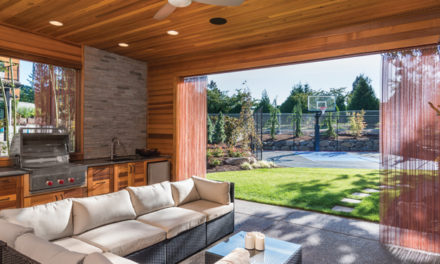By HGTV STAR, Carson Arthur
With the advent of outdoor lighting, the moonlight garden seems to have disappeared from today’s landscape designer’s repertoire. All of the nightly attention has been placed by using up lights, down lights, and path lights to create a dramatic and stunning effect in our gardens, trees, rocks, and home features. Unfortunately, sometimes we overlook the special moments that occur naturally in the darkness of our backyard spaces. We must learn to deeply appreciate the moments that are beyond our control.
The concept of designing a garden to be enjoyed at night is not a new one. With incredible examples in Japanese, English and Indian landscape designs, having a garden that comes to life at the end of the day is very special in almost every culture. Considering that most Canadians spend the majority of their time enjoying the backyard at night, taking inspiration from these historic landscapes is the perfect way to maximize outdoor enjoyment.
Plant selection is arguably the most important element when creating a moonlight garden, as this type of garden is all about activating your senses: the same senses that get neglected in the office or at work.
Traditionally, white flowering plants are used in low light because they visually glow at night. I always include pure white hydrangeas like the classic ‘Annabelle’ o r one of the new varieties such as ‘ b obo. ’ A lso consider incorporating grey and silver foliage alongside the white bloomers. I will often gravitate towards Arctic willows and myrica (bayberry) as a backdrop to a white rhododendron or a flush of dwarf white lilacs. These silver leaved plants may be the accompaniment to the showier flowers, but they are very important in bridging the light and dark among your plant choices. This visual texture should not be overlooked. Make sure to include specimens that cast shadows because they create the mystery among the everchanging dark in your gardens. I use ferns or textured hostas to add visual dimension alongside my grey and white flowering choices.
Moonlight gardens sadly don’t always have proper lighting at night to enjoy them by, which is why scent is so important in the garden. Even when you can’t see the flowers in a space, being able to smell the intoxicating floral aromas still allows you to enjoy being there. A timeless choice for fragrance will always be roses. Classic roses such as ‘Madame Plantier’ fill the backyard with an incredible perfume that your guests won’t soon forget. If you don’t prefer roses, honeysuckle and verbena are excellent alternatives to add a rich aroma. If you prefer more spice and less floral, add herbs such as sage or thyme.
Sound and movement also play a pivotal role in the garden at night. The bustle of life overwhelms your sense of hearing on a daily basis. Therefore, hearing the soft swish of a tall miscanthus or even the flutter of the leaves on a trembling aspen gives a solitary point of auditory reference. Water can be used to the same effect. Having one soothing sound helps to block out all of the other noises that occur around our homes.
Finally, add a place for yourself in the garden. Whether it’s a bench or a chair beside a path, create a spot just for you in your magical space; and wherever you choose, humor me by planting some lamb’s ear beside it. I’m convinced that rubbing these soft leaves between your fingers is nature’s version of stress relief.
Moonlight gardens are places for being peaceful and reflective. These are not the gardens for outdoor celebrations and parties. Choose locations away from hot tubs and swimming pools. Choose the corner of your property that is the darkest at night as these gardens are all about heightening the senses as the world becomes dim around you. The moonlight garden is the perfect spot to escape and let all of your worries slip away at the end of a long day.









